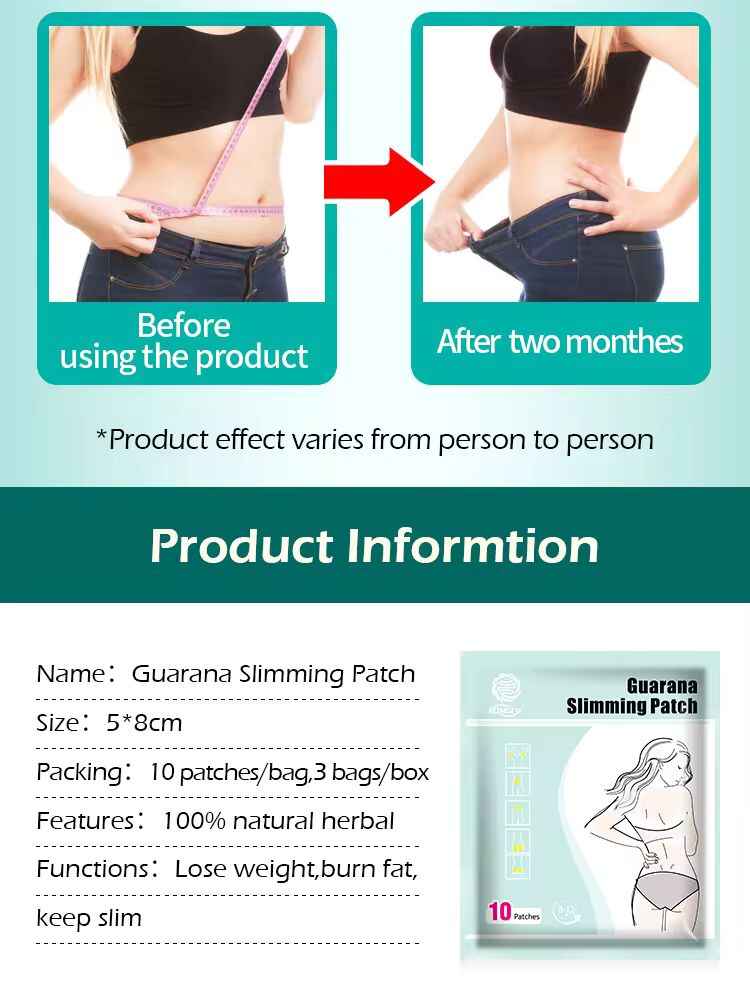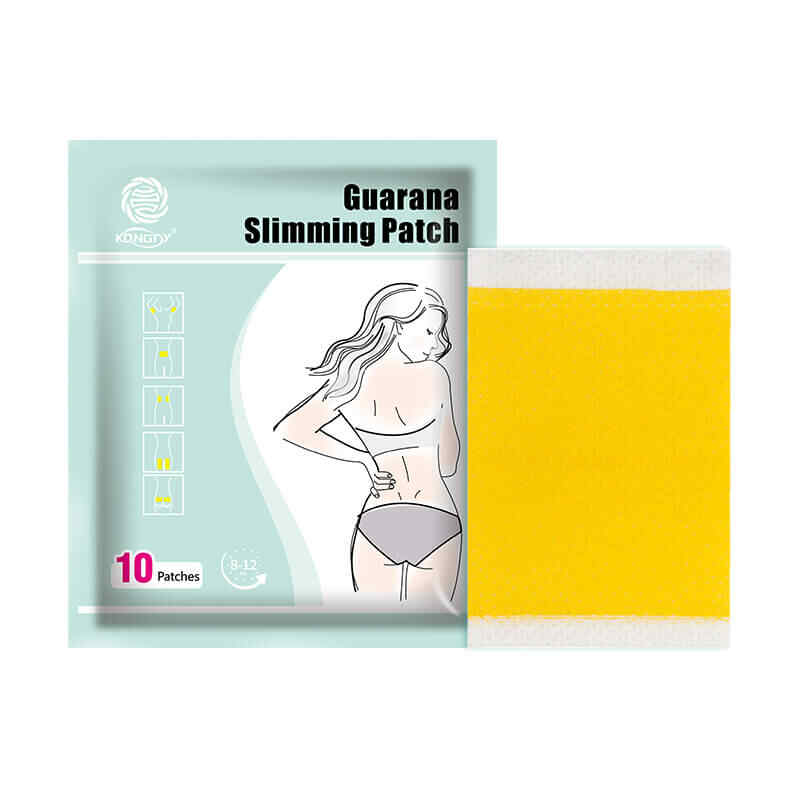Are Custom Transdermal Slimming Patches More Expensive to Produce?
In today’s health and wellness industry, transdermal slimming patches have become a popular product category. Their discreet use, convenience, and ability to deliver active ingredients through the skin make them an attractive solution for consumers who prefer alternatives to pills or powders. But for businesses planning to enter this competitive market, one common question arises: Are Custom transdermal slimming patches more expensive to produce compared to standard or Private Label options?
This article explores the production costs, factors that influence pricing, and why businesses may still find value in pursuing customization despite potentially higher upfront investment. We’ll examine insights from a transdermal slimming patches Manufacturer, the role of transdermal slimming patches OEM services, and how Private Label transdermal slimming patches compare to Custom transdermal slimming patches in terms of overall costs and benefits.

Understanding the Basics of Transdermal Slimming Patches
Before analyzing costs, it’s important to clarify the different production models available through a transdermal slimming patches Supplier or Manufacturer.
Standard Formulation
Manufacturers often offer pre-formulated slimming patches that businesses can rebrand under their own label. This is the most cost-effective option, as it involves minimal development.Private Label Transdermal Slimming Patches
In this model, companies select from an existing range of formulations and packaging, but with branding tailored to their business. It’s quicker and cheaper than customization but still allows differentiation in the market.Custom Transdermal Slimming Patches
Full customization involves working with an OEM Manufacturer to create unique formulations, select specialized ingredients, determine dosage, and design exclusive packaging. This requires R&D, clinical validation, and tailored production processes—factors that may increase costs but significantly enhance market positioning.
Factors That Influence the Cost of Custom Transdermal Slimming Patches
Whether Custom transdermal slimming patches are more expensive depends on multiple variables. Let’s explore them in detail:
1. Research and Development (R&D)
Creating Custom transdermal slimming patches requires substantial R&D. This involves:
Identifying active ingredients such as herbal extracts, fat-burning compounds, or appetite suppressants.
Testing skin absorption rates to ensure safety and efficacy.
Adjusting formulation ratios for long-lasting effects.
R&D adds an upfront expense that Private Label transdermal slimming patches avoid, since the formula already exists. However, investing in R&D often results in a unique product that competitors cannot easily replicate.
2. Ingredient Selection
Custom formulations often involve premium or rare natural ingredients that may increase raw material costs. For example:
Herbal extracts like green tea, Garcinia Cambogia, or capsicum are widely available and affordable.
Specialized bioactive compounds may require higher investment, particularly if sourced internationally.
Thus, working with a reliable transdermal slimming patches Supplier can help optimize ingredient costs while maintaining quality.
3. Production Scale
The number of units ordered directly impacts the cost-per-patch. Large production runs reduce overall expenses, even for custom solutions.
Low-volume orders: Higher unit costs due to setup fees, testing, and limited raw material purchasing.
High-volume orders: Significant savings through economies of scale.
A professional transdermal slimming patches Manufacturer will usually recommend a minimum order quantity (MOQ) that balances affordability with customization.
4. Regulatory and Quality Testing
Custom products require rigorous testing to comply with regulatory standards in target markets. This may involve:
Skin irritation tests.
Stability and shelf-life assessments.
Certification for GMP (Good Manufacturing Practices) and ISO compliance.
These quality control steps are crucial to ensure consumer safety but also add to development costs.
5. Packaging and Branding
Private Label transdermal slimming patches typically use pre-designed packaging templates, keeping costs low. In contrast, Custom patches often require:
Bespoke packaging design.
Multi-language labeling for international markets.
Eco-friendly or premium packaging materials.
Packaging investments not only raise initial costs but also enhance brand perception, which can lead to higher retail pricing and stronger consumer loyalty.
Comparing Costs: Custom vs Private Label Transdermal Slimming Patches
Let’s break down the key differences between the two models:
| Aspect | Private Label Transdermal Slimming Patches | Custom Transdermal Slimming Patches |
|---|---|---|
| Formula | Pre-developed and tested | Newly developed through R&D |
| Ingredient Cost | Standard, cost-effective | Potentially higher (premium or rare ingredients) |
| Time to Market | Short (weeks) | Longer (months due to testing) |
| Upfront Cost | Low | Higher due to development |
| Differentiation | Limited (similar to competitors) | High (unique product positioning) |
| MOQ Requirements | Moderate | Often higher |
| Branding Options | Standard templates | Fully customizable |
From this comparison, it’s clear that Custom transdermal slimming patches generally involve higher initial investment. However, the long-term benefits of owning a unique formulation often outweigh the short-term savings of a Private Label approach.
Why Custom Transdermal Slimming Patches May Be Worth the Higher Cost
While Private Label products are a good starting point, businesses with long-term growth strategies often turn to customization for several reasons:
1. Brand Differentiation
In a crowded market, having a unique formula sets a brand apart. Custom patches allow businesses to highlight unique selling points such as “all-natural ingredients,” “rapid absorption,” or “eco-friendly production.”
2. Consumer Trust and Loyalty
A unique, effective product builds consumer trust. Customers are more likely to stick with a brand that offers visible results through exclusive formulations.
3. Higher Profit Margins
Custom patches can be positioned as premium products, justifying higher retail pricing. This helps offset higher production costs while boosting profit margins.
4. Flexibility for Innovation
With Custom OEM solutions, businesses can continuously innovate by introducing new formulations, packaging upgrades, or seasonal variations. This flexibility ensures long-term competitiveness.
How to Control Costs with a Reliable OEM Manufacturer
Working with the right transdermal slimming patches Manufacturer or Supplier can minimize costs without compromising quality. Here are practical strategies:
Leverage OEM Expertise – Partner with experienced transdermal slimming patches OEM providers who already have R&D infrastructure and regulatory expertise.
Choose Scalable Ingredients – Balance premium and cost-effective ingredients for a competitive yet affordable formulation.
Negotiate MOQ Flexibility – Some suppliers offer tiered pricing that allows smaller businesses to test the market before scaling production.
Invest in Long-Term Partnerships – Building trust with a reliable supplier can lead to better pricing, priority production slots, and collaborative product development.
Conclusion
So, are Custom transdermal slimming patches more expensive to produce?
Yes, in most cases, customization comes with higher upfront costs due to R&D, ingredient sourcing, regulatory compliance, and packaging design. However, when viewed from a long-term business growth perspective, Custom products offer greater brand differentiation, consumer loyalty, and higher profit margins.
Choosing between Private Label transdermal slimming patches and Custom transdermal slimming patches depends on a company’s budget, goals, and market strategy. Businesses seeking fast entry into the market may prefer Private Label, while those aiming for long-term competitive advantage should consider Custom OEM solutions.
A trusted transdermal slimming patches Manufacturer or Supplier can provide tailored guidance to balance cost-effectiveness with innovation, making customization a worthwhile investment.
Related Questions and Answers
Q1: What is the main difference between Private Label and Custom transdermal slimming patches?
Private Label uses pre-existing formulations with custom branding, while Custom patches involve unique formulations developed through R&D.
Q2: Do Custom transdermal slimming patches require larger minimum order quantities (MOQs)?
Yes, most transdermal slimming patches OEM manufacturers require higher MOQs for custom projects due to setup and development costs.
Q3: How long does it take to develop Custom transdermal slimming patches?
Depending on complexity, it can take 3–6 months, including R&D, testing, and regulatory approval.
Q4: Can Custom transdermal slimming patches be more profitable than Private Label options?
Yes, they can command higher retail prices and foster stronger brand loyalty, which often leads to better long-term profitability.
Q5: How can I find a reliable transdermal slimming patches Manufacturer or Supplier?
Look for companies with proven OEM expertise, GMP certification, strong R&D capabilities, and transparent communication about costs and timelines.






